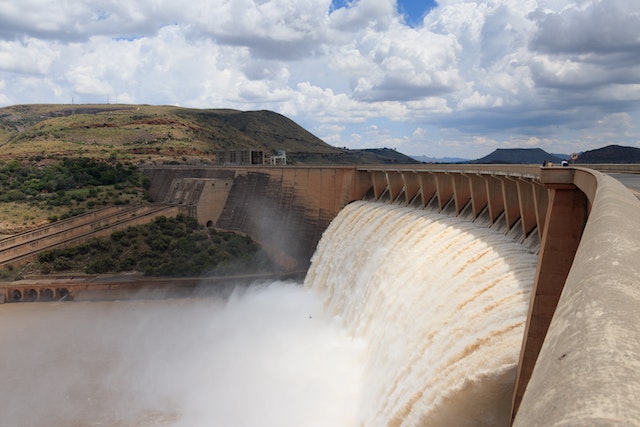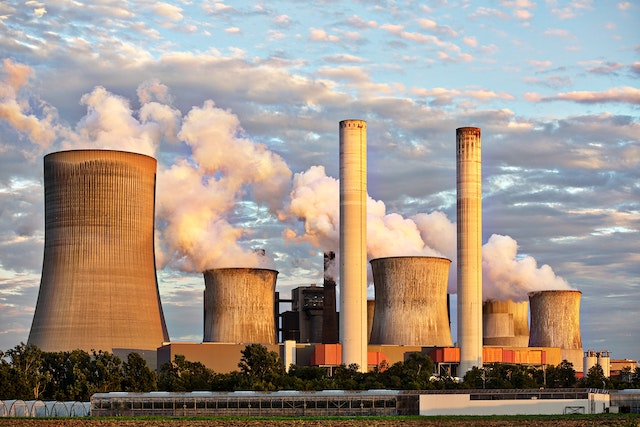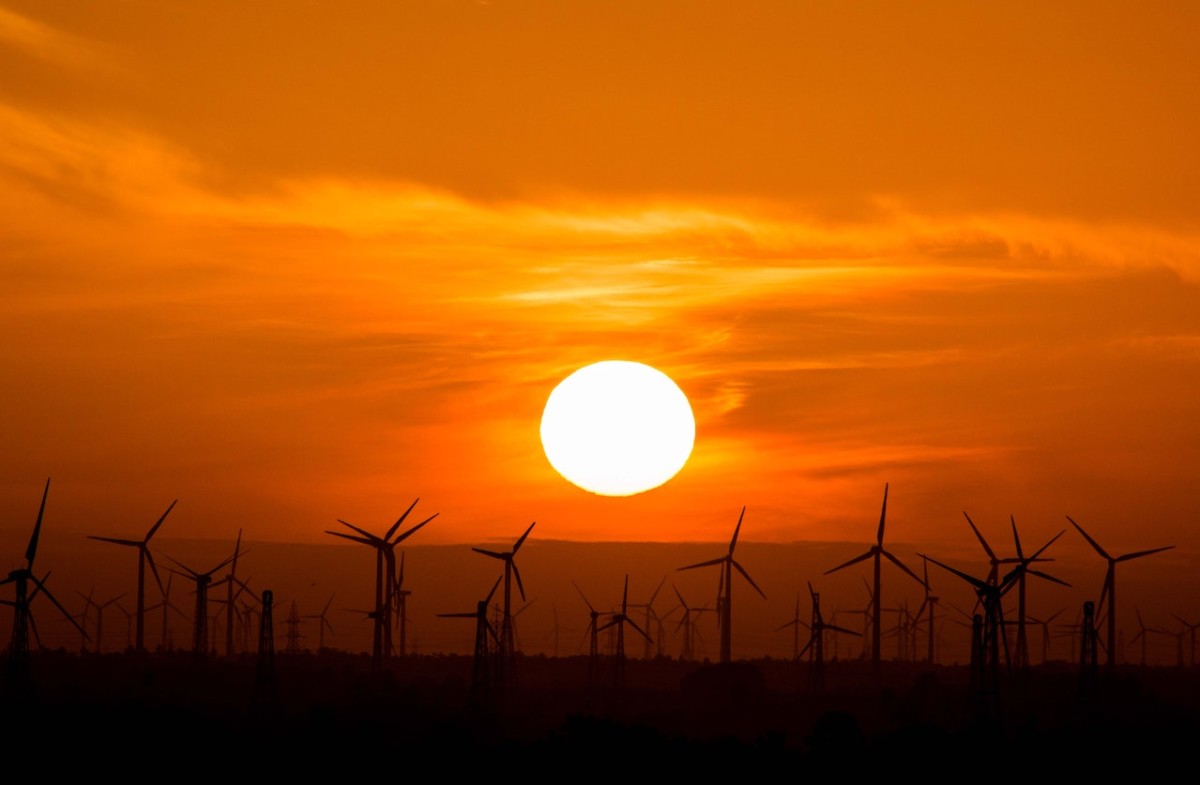Alternative Sources Of Energy Listing Examples
Alternative Sources of Energy: What Are They?
Alternative energy sources include solar power, wind power, geothermal power, biomass, hydroelectricity, tidal power, wave power, biofuels, hydrogen fuel cells, nuclear fission, fusion, and carbon sequestration. They all use renewable resources instead of fossil fuels. Below we list the alternative sources of energy and give a brief description of each.
Solar Power
Solar power is a renewable energy source that can be used to generate electricity or heat. Solar energy is captured in the form of sunlight and converted into either electrical energy or heat. Solar power is a clean, emissions-free source of energy, making it a popular choice for those looking to reduce their carbon footprint.
Solar power has a number of advantages over other forms of energy generation. Solar panels have no moving parts, meaning they require very little maintenance. Solar panels also last for many years – up to 25 years in some cases – making them a very cost-effective option in the long run. Solar power can be used to generate both electricity and heat. Electrical solar panels are the most common type of solar panel, and are typically used to generate electricity for homes and businesses.
Solar Farms
Solar farms are a type of renewable energy source that converts sunlight into electrical energy. Solar farms can be used to power homes and businesses, and can even be used to provide energy to entire communities. Solar farms are becoming increasingly popular as more people look for ways to reduce their reliance on fossil fuels.
There are a number of advantages to solar farms. First, they are a clean source of energy that does not produce emissions or pollutants. Second, solar farms can be built on a variety of land types, including rooftops, parking lots, and open fields. This means that they can be located in close proximity to the people and businesses who will use the electricity they generate. Solar farms also have some disadvantages. One is that they require a large amount of land to generate significant amounts of electricity.
Solar Photovoltaics
Solar photovoltaics are semiconductor devices that capture sunlight and convert it into electricity. They are made from a variety of materials, including silicon, cadmium telluride, and copper indium selenide. Solar PV cells are often used in calculators and solar-powered lights, but they can also be used to generate electricity for homes and businesses.
Solar PV cells work by absorbing sunlight and creating an electric field across their layers. When the sun hits the cell, photons knock electrons loose from their atoms. These free electrons flow through the cell to create an electric current. The current is then sent to an inverter, which converts it into usable AC power for your home or business. Solar PV cells are a clean, renewable source of energy that can help reduce your carbon footprint.
Wind Power

Wind power is a clean and renewable energy source that has been used for centuries to power everything from sailboats to windmills. Today, wind turbines are used to generate electricity, and wind farms can be found in many parts of the world.
Wind power is a very efficient way to generate electricity, with a typical turbine able to convert around 40% of the kinetic energy of the wind into electricity. This makes it one of the most efficient renewable energy sources available.
Wind energy is also very versatile, and can be used on both a small and large scale. Wind turbines can be used to power individual homes or businesses, or they can be grouped together into large wind farms that can provide electricity for entire communities or even countries.
Offshore wind farms are a type of alternative energy source. They are turbines that are placed in water, usually in the ocean. The United States has many coastal areas that could potentially be used for this type of energy production.
The benefits of offshore wind farms include the fact that they do not take up valuable land space, and they can produce a lot of energy. In addition, offshore winds tend to be stronger and more consistent than onshore winds, making them a more reliable source of power.
There are some challenges associated with offshore wind farms, as well. One is that they can be expensive to build and maintain. Another is that they can have an impact on the environment, including birds and other wildlife. But overall, offshore wind farms offer a promising solution to the problem of finding alternative sources of energy.
Geothermal Power
Geothermal power is a type of renewable energy that harnesses the Earth’s internal heat to generate electricity. Geothermal power plants use steam from hot water reservoirs deep underground to drive turbines that generate electricity.
The potential for geothermal energy is vast—estimates suggest that just 0.3% of the heat stored in the Earth’s crust could supply all of humanity’s energy needs for the next several thousand years. In addition, geothermal power plants have a very small carbon footprint and produce no air pollution or greenhouse gases.
Despite these advantages, geothermal power has been slow to catch on as a major source of energy. The high upfront cost of drilling wells and building power plants is a barrier to entry for many companies, and only a handful of countries have exploited their geothermal resources on a large scale.
Biomass Energy
As the world’s population continues to grow, so does the demand for energy. Finding alternative sources of energy is becoming increasingly important. Biomass is one such alternative source of energy that is getting more attention.
Biomass is organic matter that can be used as fuel. It includes wood, agricultural waste, and even some types of garbage. The advantage of biomass is that it is a renewable resource—unlike fossil fuels, which are finite. That means we won’t run out of biomass even if we continue to use it as a clean energy source.
There are a few disadvantages to using biomass as an energy source. First, it takes more effort to convert biomass into usable energy than it does to convert fossil fuels like coal and oil. Second, burning biomass releases carbon dioxide emissions into the atmosphere, which contributes to climate change.
Hydroelectricity
Hydroelectricity is a renewable energy source that can be used to generate electricity. Hydroelectric power plants use the force of falling or flowing water to spin turbines that generate electricity. Hydroelectricity is a clean and environmentally friendly source of energy, and it does not produce greenhouse gas emissions. Hydroelectric power plants can also help to regulate water flows and improve water quality. However, hydroelectricity can also have negative impacts on the environment, including alteration of local water cycles, displacement of people and wildlife, and destruction of natural habitats.
Hydroelectric Dams

The United States has over 80,000 dams, and many of them are used to generate hydroelectric power. Hydroelectric dams work by using the force of moving water to spin turbines, which in turn generates electricity. Hydroelectric power is a renewable resource, and it is also one of the most efficient ways to generate electricity. Hydroelectric dams have very little impact on the environment, and they can provide power for many years with proper maintenance.
Despite the many benefits of hydroelectric dams, there are also some drawbacks. One major drawback is that they can cause environmental problems when they are built in sensitive areas. Another drawback is that they can be expensive to build and maintain.
Tidal Power
Tidal power is one of the oldest forms of renewable energy. It has been used for centuries to power mills and pumps. Today, it is being increasingly looked at as a source of renewable electricity.
Tidal power works by harnessing the energy of the tides. Tides are created by the gravitational pull of the moon and sun on the earth’s oceans. This causes a rise and fall in sea level twice each day.
The energy in tidal currents can be captured using a range of different technologies. The most common type is the barrage. This involves building a dam across a tidal estuary. As the tide comes in, water is trapped behind the dam. When the tide goes out, the water is released through turbines, which generate electricity.
Wave Power
As the world looks for ways to reduce its dependence on fossil fuels, alternative sources of energy are becoming more and more important. One promising option is wave power, which harnesses the energy of ocean waves to generate electricity.
Wave power has several advantages as an energy source. First, it is renewable and sustainable: as long as the ocean keeps crashing into shore, we can keep generating power from it. Second, it is very consistent: unlike solar or wind power, which can be intermittent depending on the weather, waves tend to be fairly constant day in and day out. Finally, wave power is very efficient: a well-designed wave energy converter can capture a large amount of energy from the waves passing by.
Despite these advantages, wave power faces some challenges. The first challenge is that wave energy is not yet commercially viable. The second challenge is that wave power can be difficult to site because of aesthetic concerns and potential conflicts with other ocean uses. As a result, there are very few commercial wave power projects operating today.
Biofuels – We can use plants as an alternate source of fuel.
Biofuels are made by converting plant material into liquid fuels. This process requires less energy than traditional methods of producing oil and gas. It also produces fewer greenhouse gases than conventional methods.
Hydrogen Fuel Cells
Hydrogen fuel cells are an alternative energy source that can be used to power vehicles and other devices. Fuel cells work by converting chemical energy into electrical energy, and they can be powered by a variety of different fuels including hydrogen, natural gas, and propane.
Fuel cells have a number of advantages over traditional combustion engines. For one, they are much more efficient – up to three times more efficient than a gasoline engine. This means that less fuel is needed to produce the same amount of power, which can lead to significant cost savings over time. In addition, fuel cells emit no pollutants or greenhouse gases, making them a much cleaner option than gasoline or diesel engines.
Despite these advantages, there are still some challenges associated with hydrogen fuel cells. One is the lack of infrastructure for distributing and storing hydrogen gas.
Nuclear Power Plants

A nuclear power plant is a facility that uses nuclear fission to generate electricity. Nuclear power plants are one type of many power plants that use different energy sources to generate electricity. Nuclear fission is the process of splitting an atom, which releases energy. That energy is then used to heat water, which creates steam. The steam spins turbines, which generates electricity.
Nuclear power plants generate about 20% of the world’s electricity. They have many advantages over other types of power plants, such as coal-fired power plants. For example, they emit no greenhouse gases. However, nuclear power plants also have some disadvantages. They require large upfront investments, and they can create radioactive waste that must be carefully disposed of. The environmental impact of Chernobyl is well documented.
Nuclear Fission
Nuclear fission is a process in which an atom is split into smaller atoms. This process releases energy that can be used to generate electricity. Nuclear fission is a safe and clean source of energy. However, care must be taken in handling nuclear waste. Nuclear fission occurs when a large atom such as uranium (U) or plutonium (Pu) is hit by a neutron. When this happens, the nuclei of the atoms are rearranged and split into smaller atoms.
Fusion
Fusion is the process of two atoms colliding and joining together to form a new, larger atom. This process releases a huge amount of energy, making it a potential source of power. Fusion has been studied for decades as a possible alternative to fossil fuels, but so far it has only been possible to create fusion on a small scale in laboratories.
There are many challenges that need to be overcome before fusion can be used to generate power on a large scale. For example, the fuel for fusion reactions (hydrogen) needs to be heated to extremely high temperatures, and this requires developing new materials that can withstand these conditions.
Despite the challenges, scientists remain optimistic that fusion could one day provide an abundant and clean source of energy.
Carbon Sequestration
Carbon sequestration is the long-term storage of carbon in solid or liquid form. It offers a way to reduce atmospheric concentrations of greenhouse gases, which are thought to contribute to climate change.
There are a number of ways to store carbon, including planting trees and other vegetation, using agricultural practices that promote soil health, and storing carbon in geological formations underground. While there are challenges associated with each method, carbon sequestration has the potential to play a significant role in mitigating climate change.
Trees and other plants take in carbon dioxide from the atmosphere and store it in their leaves, branches, and trunks. When they die and decompose, this stored carbon is released back into the atmosphere. However, if trees are harvested and used for lumber or paper products, that carbon can be stored for much longer periods of time.
What is a Finite Resource?
A finite resource is a natural resource that can only be replenished at a rates lower than its rate of consumption. The term often refers to fossil fuels such as crude oil, natural gas, and coal. These resources are considered finite because they cannot be replenished on a human time scale. In contrast, renewable resources such as solar, wind, and hydro can be replenished relatively quickly.
Finite resources are often nonrenewable resources. This means that once the supply of the finite resource has been used up, it cannot be replaced. For example, when a coal mine is depleted of coal, it cannot be used again to produce energy. The United States has about 486 billion tons of recoverable coal reserves. If current rates of consumption continue, these reserves will last about 115 years.
Conclusion: the future of energy
As the world looks for ways to become more sustainable, the future of energy is looking more and more like renewable sources. Solar, wind, and hydro power are all becoming more cost-effective and efficient as technology improves.
Nuclear power is also becoming safer and more efficient, making it a viable option for the future. The use of fossil fuels will likely decline in the coming years as renewable energy resources becomes more prevalent. This is good news for the environment, as burning fossil fuels releases harmful greenhouse gases into the atmosphere. The switch to renewable energy will help reduce pollution and slow down climate change.
Global warming
In the past three decades, the Earth’s average surface temperature has risen about 0.6 degrees Celsius (1.08 Fahrenheit), with much of this increase occurring in the last three decades of the 20th century. The warming trend is now evident in all continents and across the oceans.
Scientists believe that this recent rapid warming trend is largely caused by human activity, such as burning fossil fuels, like coal and oil. Burning these fossil fuels releases what are called greenhouse gases into Earth’s atmosphere. There, these gases trap heat from the sun’s rays inside the atmosphere causing Earth’s average temperature to rise.
Since 1970, global carbon dioxide emissions have doubled and now account for more than 60% of all greenhouse gas emissions. Other major contributors include methane and nitrous oxide emissions, which come from agricultural activities and decomposing organic matter respectively.
There are many options for clean, renewable energy, and it seems that the future of green energy is moving in this direction. As we continue to search for ways to sustain our planet, it is likely that renewable energy will play a big role in providing power for the future.
Recent Posts
Wind Energy and Its Economic Benefits for Local Communities Firstly wind energy has emerged as a powerful driver of economic development, particularly in local communities. It provides a...
Potential Energy in a Spring: Understanding the Fundamentals
Potential Energy in a Spring Firstly, understanding the potential energy in a spring is fundamental to grasping how energy is stored and transferred in various physical systems. Springs, as...


